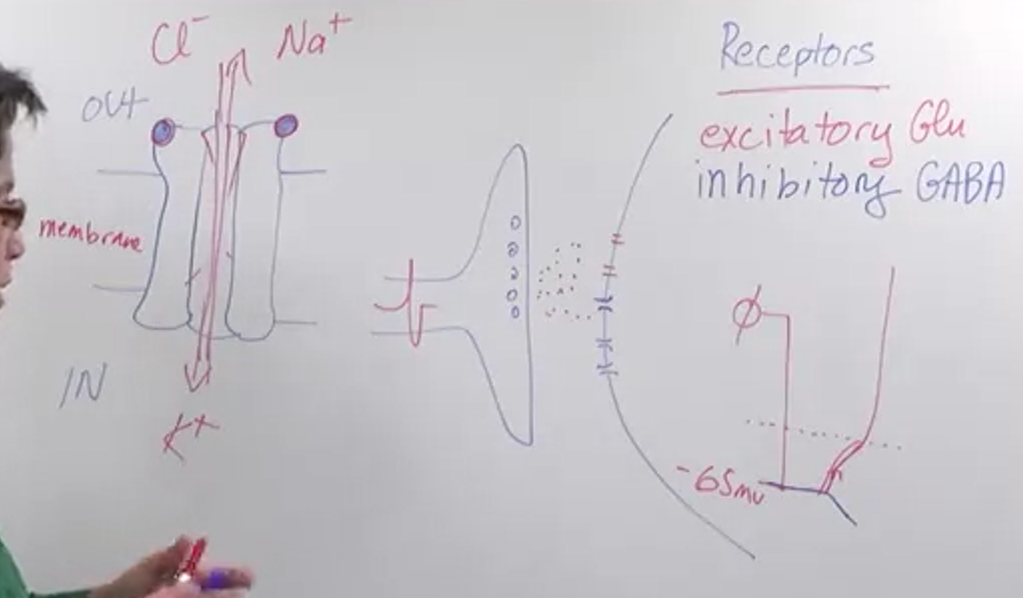

Detailed Reference Note on Synaptic Receptors
Receptors: Receiving the Message
Following neurotransmitter release, the postsynaptic cell needs to receive the signal. This is achieved through receptors, which are multi-protein complexes embedded in the postsynaptic membrane.
Receptor Structure and Function:
- Transmembrane proteins: They span the entire cell membrane, creating a pore for ions to pass through.
- Normally closed: Ions cannot flow through the pore until activated.
- Activation by neurotransmitters: Binding of specific neurotransmitters triggers a conformational change, opening the pore.
- Selective permeability: Different receptors allow passage of specific ions (e.g., sodium, potassium, chloride).
Types of Receptors:
- Excitatory receptors: Increase the membrane potential, bringing it closer to the threshold for an action potential (firing).
- Example: Glutamate receptor (GluR)
- Inhibitory receptors: Decrease the membrane potential, moving it further away from the threshold, making it less likely to fire an action potential.
- Example: Gamma-aminobutyric acid (GABA) receptor
Impact on Diseases and Therapeutics:
- Myasthenia Gravis (MG): An autoimmune disease where antibodies destroy acetylcholine receptors (AChRs) at the neuromuscular junction.
- Symptoms: Muscle weakness due to impaired neuromuscular communication.
- Treatments:
- Acetylcholinesterase (AChE) inhibitors: Prolong the action of acetylcholine by preventing its degradation, allowing it to reach the remaining AChRs.
- Immunosuppressants: Reduce antibody production to prevent further AChR destruction.
Key Points:
- Receptors are crucial for converting the chemical signal (neurotransmitter) into an electrical signal (action potential) in the postsynaptic cell.
- Different receptor types mediate excitatory or inhibitory effects.
- Understanding receptor function is essential for developing treatments for various neurological disorders.
Additional Notes:
- The lecture mentions “glutamyl” as the neurotransmitter for the excitatory glutamate receptor. This is a slight inaccuracy. Glutamate itself is the neurotransmitter, not “glutamyl.”
- Type of Receptors